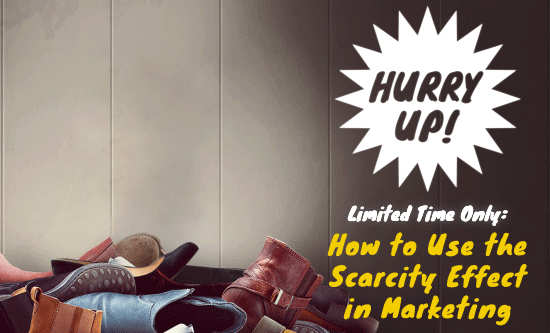I’m sure you can recall a time when you were booking your next vacation, daydreaming about the idyllic resort you were looking at while suddenly you saw a message pop-up with “last room at this price”. It’s highly likely that you felt nervous and worried about missing out on your perfect little retreat. After all, there were only a few rooms available, right?!
This phenomenon is known as the “scarcity effect”. Whether it’s a fear of missing out on bargains during sales season, or not being the first person to get their hands on the new iPhone, the scarcity effect has been used to great success by marketers for decades.
When a product becomes (ostensibly) less readily available, it’s almost guaranteed that consumers will see the product as more valuable, creating a rise in demand. This theory is supported by Robert Cialdini in his 2008 book “Influence: Science and Practice” in which he determines that the sheer perception of limited quantity or time is enough to drive the scarcity effect. If marketed correctly, this will normally result in increased customer engagement and a higher likelihood of sales conversion.
In 2012, Lee and Seidle put the scarcity effect to the test in a study titled “The Wristwatch Ad Experiment”. As part of the study, participants were shown one of two different product descriptions. In the first sample group, participants were shown the description “Exclusive limited edition. Hurry stocks are limited”. In comparison, the second group was given the description of “New edition and many items in stock”. When asked to value the product based off these descriptions, the first group valued the watch at 50% more than the other group – a clear example of the scarcity effect in action!
For marketers looking to expand their customer base, increase customer engagement and score more conversions, the scarcity principle offers us a range of marketing options. These include:
- Sell the idea that products are scarce: hotel booking websites and airline search engines do this well by showing the remaining number of rooms or seats available.
- Amplify limited quantities: use phrases like “in high demand” or “only 2 rooms left at this price”.
- Highlight goods as fast-selling: pop-ups on booking websites that declare “18 people are currently viewing this hotel”instil a sense of urgency to purchase.
- Demonstrate the limited timeframes: utilise phrases like “today only” or “last call” to create the illusion that goods or offers may run out.
- Leverage exclusivity and limited access: terms such as “exclusive access for VIP members only” instil a sense of prestige and create a sense of increased value.
The scarcity effect plays on the psychological principle that humans will always desire and strive to attain what’s difficult to acquire. By creating an illusion of scarcity, people are subsequently made to feel unique and special when they purchase these products – a powerful emotion that will positive feelings about their purchase, the product and the brand.
Whether by seasonal offers, purchase countdowns or highlighting real-time activity, the scarcity effect should be an essential element of every marketer’s toolbox.
 By Kitty Shui, Data-driven Strategy Specialist at Digital Alchemy.
By Kitty Shui, Data-driven Strategy Specialist at Digital Alchemy.
[pardot-form id=”46577″ title=”Blog Sign up test1″]



